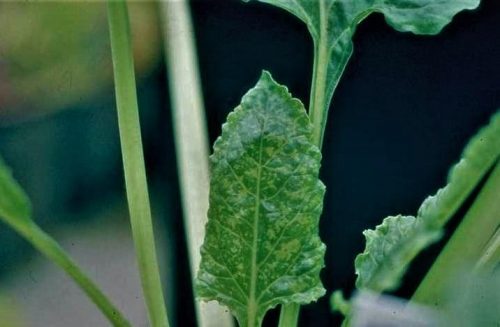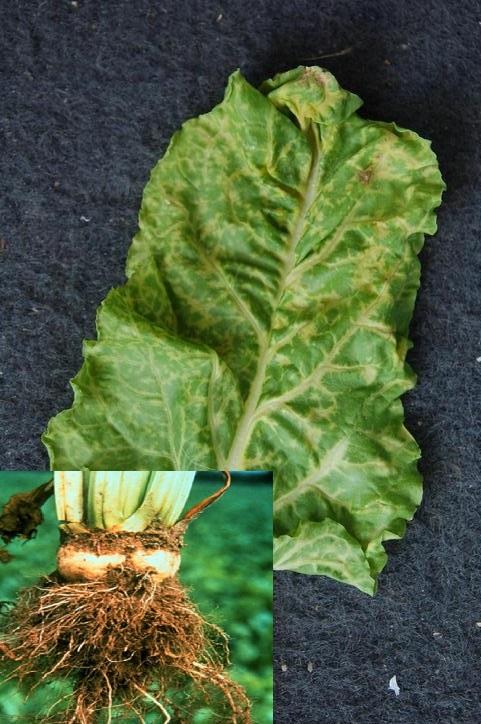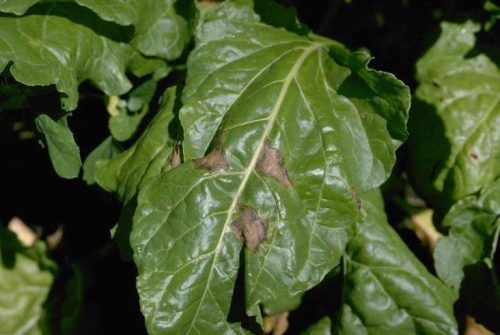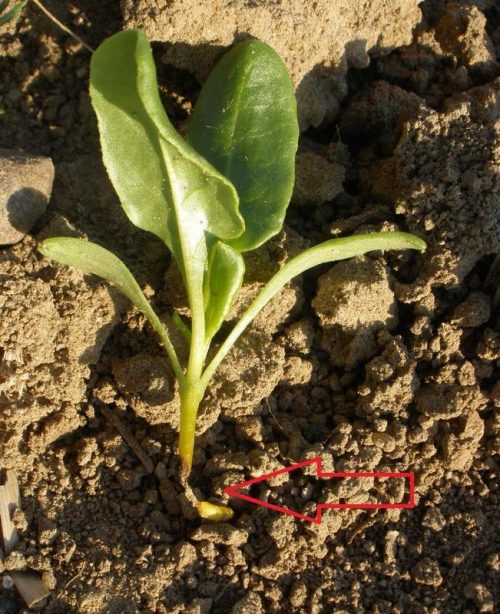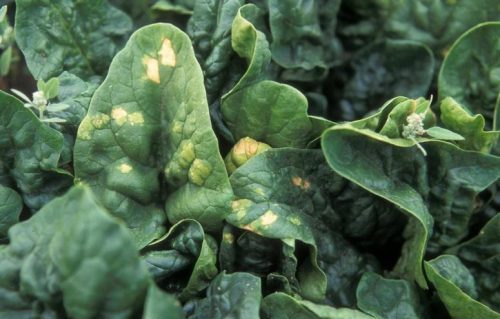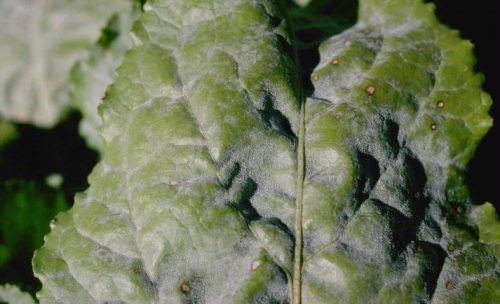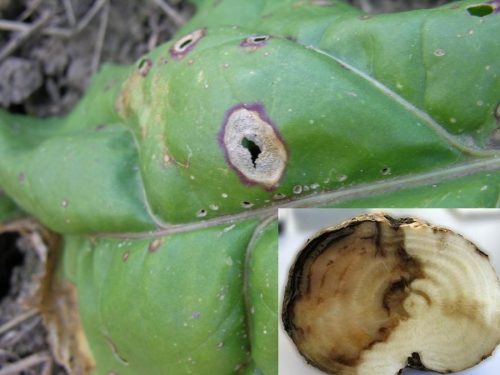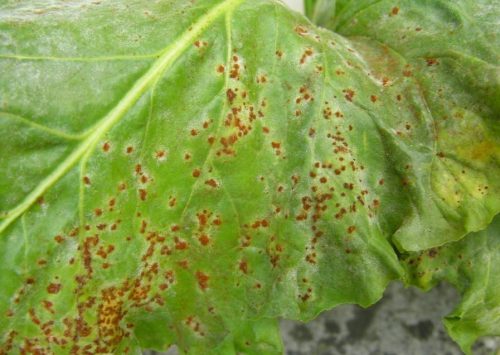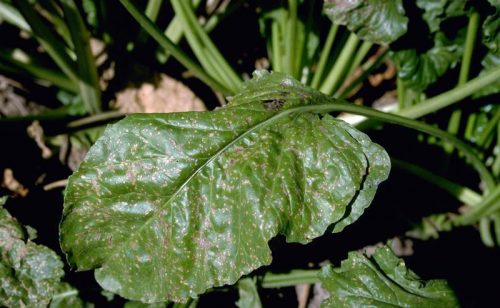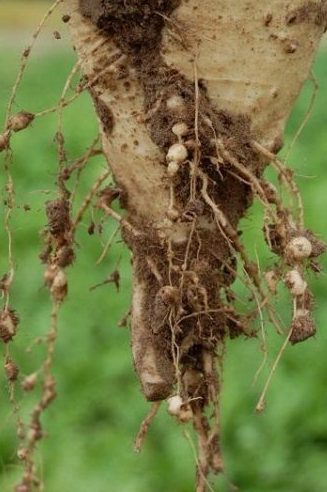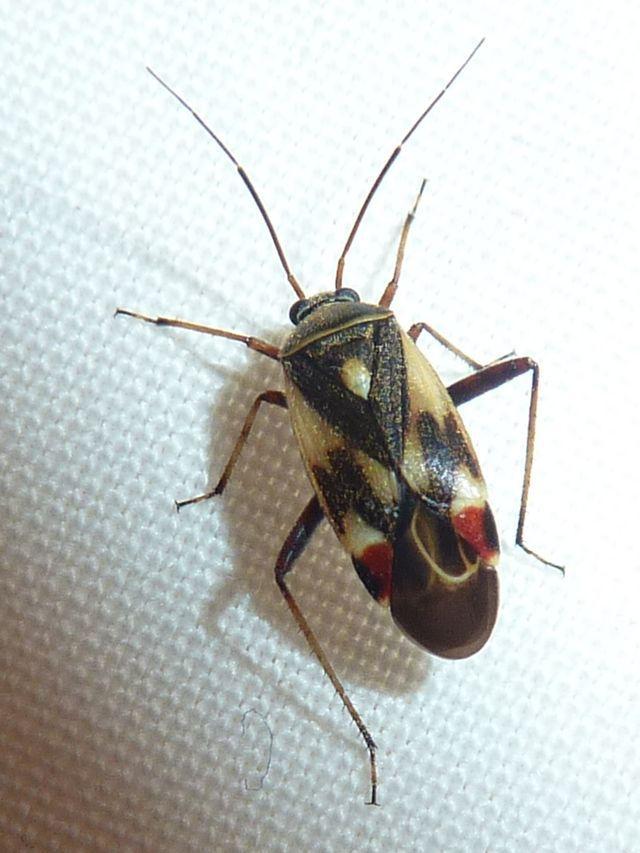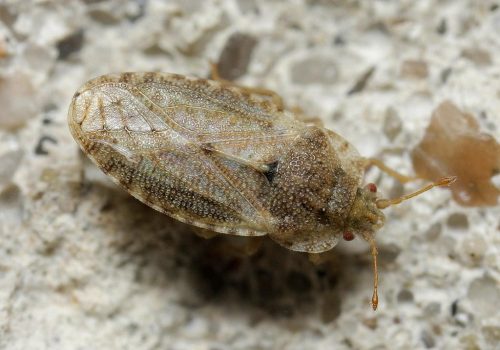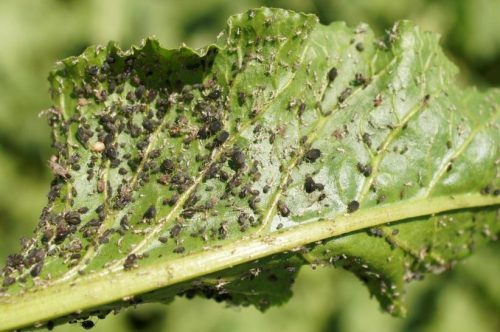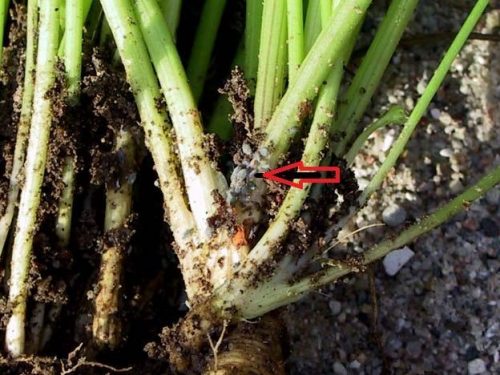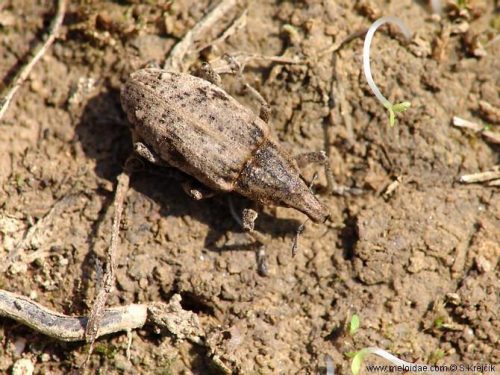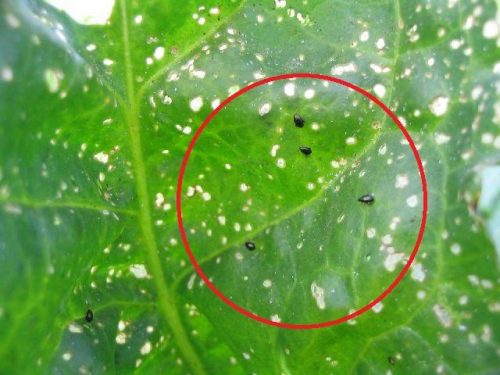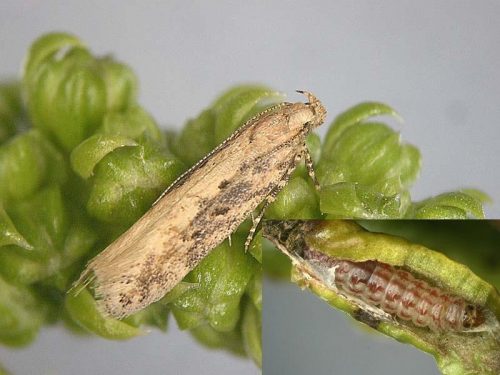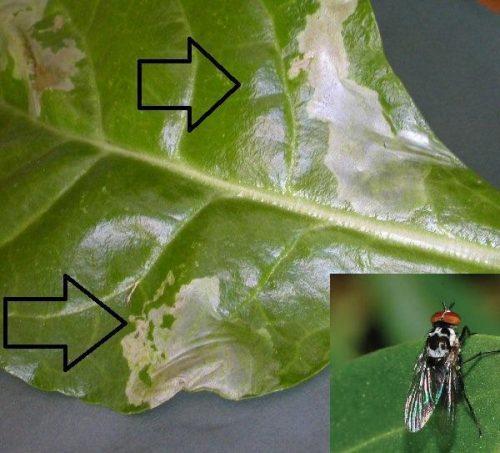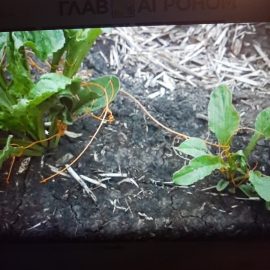Sugar beet treatments, pest and disease control
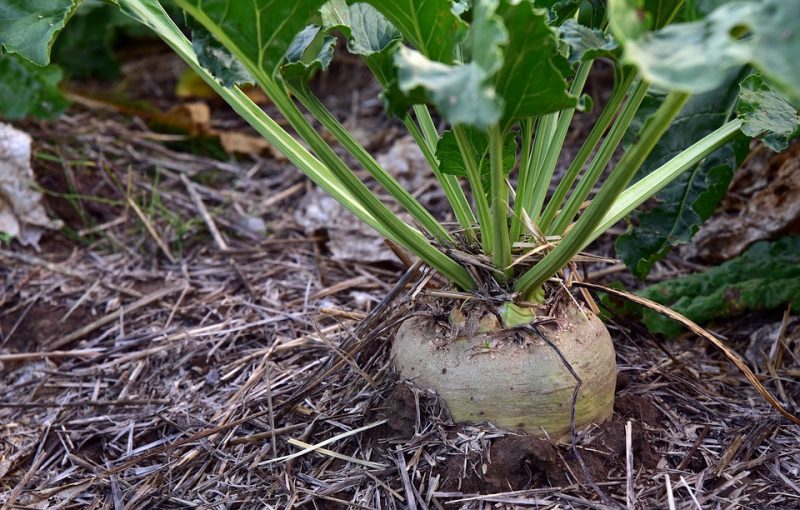
Sugar beet (Beta vulgaris var. saccharifera) is a technical plant with great popularity among farmers. It is grown for the large amounts of sugar that the beetroots contain. Sugar beet is primarily used as a raw material in the sugar industry. The molasses resulting from the processing of beets is used in the food industry and in the alcohol industry. Cultivating sugar beet is very profitable. It also responds well to fertilization, water from the soil, or irrigation, being a good precursor plant to most crops.
The main diseases of sugar beet
Beet mosaic virus
Symptoms appear a few days after infection by discoloration of the leaf ribs and the appearance of irregular light green spots. The attacked tissues no longer develop normally, and in alternation with the healthy tissue, the leaf acquires a mosaic appearance. In severe cases, the leaves wrinkle and have a short petiole. This virus is transmitted by aphids.
Prevention and control measures:
- balanced fertilization;
- sowing at the optimum time;
- destroying the weeds;
- removing the diseased plants from the crop;
- applying insecticides to control the insects.
Beet necrotic yellow vein virus
The disease occurs in all phases of vegetative growth. In the seedling stage, the crop is completely destroyed. Attacked at a later stage, the plants survive, but do not grow. In some cases, the ribs of the leaves turn yellow and then necrotize. The leaves are small, straight, upwards-oriented, and wither on hot days. The plants have a generally damaged appearance, the roots have the shape of a peg and develop many lateral roots. The top of the root is destroyed and the fluid-conducting tissues necrotize.
Prevention and control measures:
- avoiding compacted and damp lands;
- sowing early;
- weed control;
- balanced fertilization;
- cultivating resistant hybrids.
Bacterial leaf spot (Pseudomonas syringae pv aptata)
This disease manifests up to the stage of 4-6 true leaves. Blackish-brown spots appear, surrounded by a dark halo. In some cases, the affected tissues dry out and fall off, and the leaves have a sifted appearance. The bacterium is transmitted through infected seeds and overwinters on plant remains left on the ground after removing the leaves during harvest.
Prevention and control measures:
- cultivating healthy seeds;
- cultivating resistant hybrids;
- proper hygiene;
- adhering to the crop rotation.
Pythium root rot (Pythium spp.)
The disease manifests as dangerous until the plants develop the first two true leaves. The seedlings have small watery-looking spots on the area between the roots and the stem. The attacked area becomes thin and shrivels up, after which it blackens and rots. Even though the plants are green, they fall to the ground. They are destroyed in a short time and gaps appear in the culture.
Prevention and control measures:
- applying agrotechnical measures to promote the start of the vegetative growth period;
- balanced fertilization;
- avoiding soils infested with nematodes and an acidic pH;
- avoiding damp soils;
- treating the seeds before sowing.
Downy mildew (Peronospora schachtii)
This disease occurs in rainy years and produces losses of up to 15%. The disease can attack the plants from the seedling stage. The attacked leaves remain small, become deformed, thick and brittle, and eventually dry out. In autumn, the attack can be observed on the leaves in the center of the rosette. Discoloration spots appear on their topside, accompanied by a purplish fuzz that develops on the underside. Transmission is done through infected seed material.
Prevention and control measures:
- cultivating resistant varieties and hybrids;
- treating the seeds before sowing;
- destroying the plant remains left after harvest;
- carrying out treatments with specific fungicides.
Powdery mildew (Erysiphe betae)
This disease attacks all the aerial organs of the plant, but the characteristic symptoms appear on the leaves. The fungus develops white, pasty spots that spread rapidly and cover the leaves on both sides. Towards autumn, the “felt” becomes dusty, and small black dots appear on the surface, which represent the fructification of the fungus. Strongly attacked leaves turn yellow and dry out.
Prevention and control measures:
- gathering or destroying the plant remains resulting from harvest;
- cultivating resistant hybrids;
- carrying out treatments with specific fungicides.
Recommended products
-
You can find products on a different store
Change Store -
You can find products on a different store
Change Store -
You can find products on a different store
Change Store -
You can find products on a different store
Change Store -
You can find products on a different store
Change Store -
You can find products on a different store
Change Store -
You can find products on a different store
Change Store -
You can find products on a different store
Change Store -
You can find products on a different store
Change Store -
You can find products on a different store
Change Store -
You can find products on a different store
Change Store -
You can find products on a different store
Change Store -
You can find products on a different store
Change Store -
You can find products on a different store
Change Store -
You can find products on a different store
Change Store -
You can find products on a different store
Change Store -
You can find products on a different store
Change Store -
You can find products on a different store
Change Store -
You can find products on a different store
Change Store -
You can find products on a different store
Change Store -
You can find products on a different store
Change Store -
You can find products on a different store
Change Store -
You can find products on a different store
Change Store -
You can find products on a different store
Change Store
Black leg of beet (Pleospora betae)
It is a very dangerous disease that causes significant damage. Following the attack, the leaves in the middle of the rosette wither and are invaded by circular brown spots. The roots rot, starting from the area between the roots and the stem to their tips. The fungus continues its development in storehouses. It overwinters on plant remains from the surface of the soil and on infected seeds.
Prevention and control measures:
- balanced fertilization;
- the main method of ensuring the health of the crop is to disinfect the seeds before sowing.
Rust (Uromyces betae)
The disease occurs at the end of the vegetative growth period. Yellow punctiform spots appear on both sides of the leaves. Later, orange cups appear on the underside of the leaves. Starting with August, the disease develops and brown formations appear on the leaves. Towards autumn, the formations change color and become blackish. Eventually, the attacked leaves turn brown and dry.
Prevention and control measures:
- cultivating resistant varieties and hybrids;
- destroying plant remains resulting from harvesting;
- carrying out deep plowing;
- a proper crop rotation.
Cercospora leaf spot disease (Cercospora beticola)
It is the most common beet disease. The fungus appears in the culture at the end of June. Round, yellow spots appear on the leaves. The disease progresses and the spots become gray, bordered by a reddish-brown ring. The spots are initially isolated, and then multiply, merge and cover large portions of the foliar limb. The attacked tissues dry up and fall off, and the leaves end up having a sifted appearance.
Prevention and control measures:
- cultivating resistant hybrids;
- a proper crop rotation;
- using healthy seeds;
- carrying out treatments with specific fungicides.
Recommended products
-
You can find products on a different store
Change Store -
You can find products on a different store
Change Store -
You can find products on a different store
Change Store -
You can find products on a different store
Change Store -
You can find products on a different store
Change Store -
You can find products on a different store
Change Store -
You can find products on a different store
Change Store -
You can find products on a different store
Change Store -
You can find products on a different store
Change Store -
You can find products on a different store
Change Store -
You can find products on a different store
Change Store -
You can find products on a different store
Change Store -
You can find products on a different store
Change Store -
You can find products on a different store
Change Store -
You can find products on a different store
Change Store -
You can find products on a different store
Change Store -
You can find products on a different store
Change Store -
You can find products on a different store
Change Store -
You can find products on a different store
Change Store -
You can find products on a different store
Change Store -
You can find products on a different store
Change Store -
You can find products on a different store
Change Store -
You can find products on a different store
Change Store -
You can find products on a different store
Change Store
The main pests of sugar beet
Sugarbeet nematode (Heterodera schachtii)
It produces two generations a year and overwinters in the cyst stage. It attacks plants in the Chenopodiaceae family because they ensure optimal conditions for the pest’s development. The attack occurs in late June on isolated plants or in groups. On hot days, the plants wither, turn yellow or even dry out, while the main roots are short and develop many secondary roots.
Control methods:
- cultivating healthy seeds;
- early sowing;
- adhering to a correct crop rotation.
Sugar beet bug (Poecyloscytus cognatus)
It produces one generation per year and overwinters in the egg stage in various sheltered areas (in the bark of trees, on the stems of grass plants). It is a polyphagous species, but it prefers sugar beet, being considered the main pest of this crop. Following the attack, the tissues bend and dry. Also, the wounds caused by this pest represent gateways for phytopathogenic organisms.
Control methods:
- balanced fertilization;
- destroying the weeds in the crop;
- carrying out treatments with specific insecticides.
Beet lace bug (Piesma quadratum)
It produces two generations per year and overwinters in the adult stage under the vegetal remains from the surface of the soil or in the leafage of the borders. The plants display discoloration at the place of attack, and the leaves no longer grow normally. The leaves may also wrinkle. This pest also causes indirect damages by transmitting various viruses.
Control methods:
- balanced fertilization;
- destroying the weeds in the crop;
- carrying out treatments with specific insecticides.
Black bean aphid (Aphis fabae)
It is a migratory species that produces several generations per year and overwinters in the egg stage. The insect attacks over 200 species of plants, and sugar beet is an intermediate host. It colonizes the aerial parts of the plant and feeds on its intracellular fluid. Following the attack, the growth and development of the plants is slowed down. These aphids can also transmit a number of viruses.
Control methods:
- destroying the weeds in the crop;
- carrying out treatments with specific insecticides.
Recommended products
-
You can find products on a different store
Change Store -
You can find products on a different store
Change Store -
You can find products on a different store
Change Store -
You can find products on a different store
Change Store -
You can find products on a different store
Change Store -
You can find products on a different store
Change Store -
You can find products on a different store
Change Store -
You can find products on a different store
Change Store -
You can find products on a different store
Change Store -
You can find products on a different store
Change Store -
You can find products on a different store
Change Store -
You can find products on a different store
Change Store -
You can find products on a different store
Change Store -
You can find products on a different store
Change Store -
You can find products on a different store
Change Store -
You can find products on a different store
Change Store -
You can find products on a different store
Change Store -
You can find products on a different store
Change Store -
You can find products on a different store
Change Store -
You can find products on a different store
Change Store -
You can find products on a different store
Change Store -
You can find products on a different store
Change Store -
You can find products on a different store
Change Store -
You can find products on a different store
Change Store
Sugar beet root aphid (Pemphigus fuscicornis)
It produces about eight generations per year and overwinters as a female or in the egg stage in the ground, at a depth of between 20 and 100 cm. It prefers dry and hot places and attacks several plants that are part of the Chenopodiaceae family. Adults and larvae feed on the intracellular fluid of the roots. Following the attack, the plants wither and the roots shrivel up. Also, the plants are weakened and can be easily attacked by various phytopathogens.
Control methods:
- destroying the weeds in the crop;
- treating the seeds before sowing;
- carrying out treatments with specific insecticides when the first colonies appear.
Sugarbeet weevil (Bothynoderes punctiventris)
It produces one generation per year and overwinters in the adult stage in the soil, at a depth between 20 and 25 cm. It is one of the most dangerous pests of sugar beet. The larvae and adults attack the beet seedlings, which they cut off from the area between the roots and the stem or gnaw the cotyledons. One insect can destroy 10-12 plants a day. After the development of the first true leaves, the adults can no longer compromise the culture, but gnaw the roots. As a result, the attacked plants wither, and the root develops many secondary roots. The attacked plants are less developed and the production is low.
Control methods:
- a correct crop rotation;
- destroying the weeds in the crop;
- treating the seeds before sowing;
- carrying out treatments during the vegetative growth period with specific insecticides.
Recommended products
-
You can find products on a different store
Change Store -
You can find products on a different store
Change Store -
You can find products on a different store
Change Store -
You can find products on a different store
Change Store -
You can find products on a different store
Change Store -
You can find products on a different store
Change Store -
You can find products on a different store
Change Store -
You can find products on a different store
Change Store -
You can find products on a different store
Change Store -
You can find products on a different store
Change Store -
You can find products on a different store
Change Store -
You can find products on a different store
Change Store -
You can find products on a different store
Change Store -
You can find products on a different store
Change Store -
You can find products on a different store
Change Store -
You can find products on a different store
Change Store -
You can find products on a different store
Change Store -
You can find products on a different store
Change Store -
You can find products on a different store
Change Store -
You can find products on a different store
Change Store -
You can find products on a different store
Change Store -
You can find products on a different store
Change Store -
You can find products on a different store
Change Store -
You can find products on a different store
Change Store
Sugarbeet flea beetle (Chaetocnema spp.)
These species produce 2-3 generations per year and overwinter in the adult stage in the surface layer of the soil or under plant remains. They cause great damages to stock beet and sugar beet crops. The adults gnaw the seeds, cotyledons or the first true leaves. The attacked tissues dry out and the plants have a sifted appearance. The development of the plants is slowed down and the capacity for photosynthesis is reduced. Severe attacks are common during dry years.
Control methods:
- a correct crop rotation;
- destroying the weeds in the crop;
- treating the seeds before sowing;
- carrying out treatments with specific insecticides.
Recommended products
-
You can find products on a different store
Change Store -
You can find products on a different store
Change Store -
You can find products on a different store
Change Store -
You can find products on a different store
Change Store -
You can find products on a different store
Change Store -
You can find products on a different store
Change Store -
You can find products on a different store
Change Store -
You can find products on a different store
Change Store -
You can find products on a different store
Change Store -
You can find products on a different store
Change Store -
You can find products on a different store
Change Store -
You can find products on a different store
Change Store -
You can find products on a different store
Change Store -
You can find products on a different store
Change Store -
You can find products on a different store
Change Store -
You can find products on a different store
Change Store -
You can find products on a different store
Change Store -
You can find products on a different store
Change Store -
You can find products on a different store
Change Store -
You can find products on a different store
Change Store -
You can find products on a different store
Change Store -
You can find products on a different store
Change Store -
You can find products on a different store
Change Store -
You can find products on a different store
Change Store
Beet moth (Scrobipalpa ocellatella)
It is a species with 3-4 generations per year and overwinters in the larval stage on the beet remains left after harvest or on stored roots. The larvae feed on the young leaves or drill galleries in the petiole, in the area between the roots and the stem, or in the root. The attacked organs are covered with silky threads or droppings. The attacked plants lose their leaves, the roots are poorly developed and the production is low.
Control methods:
- a correct crop rotation;
- disinfecting the storage spaces;
- carrying out treatments with specific insecticides.
Beet leafminer (Pegomya hyoscyami)
It produces two generations a year and overwinters as a pupa in the surface layer of the soil. Adults are not dangerous, but the larvae penetrate the leaves, between the upper and lower epidermis, where they consume the parenchyma. The pest is very dangerous when the plant has less than eight leaves. The attacked leaves are full of droppings and the capacity for photosynthesis is reduced.
Control methods:
- weed control;
- balanced fertilization;
- carrying out treatments with specific insecticides.














































































































































































































































































































































































































































